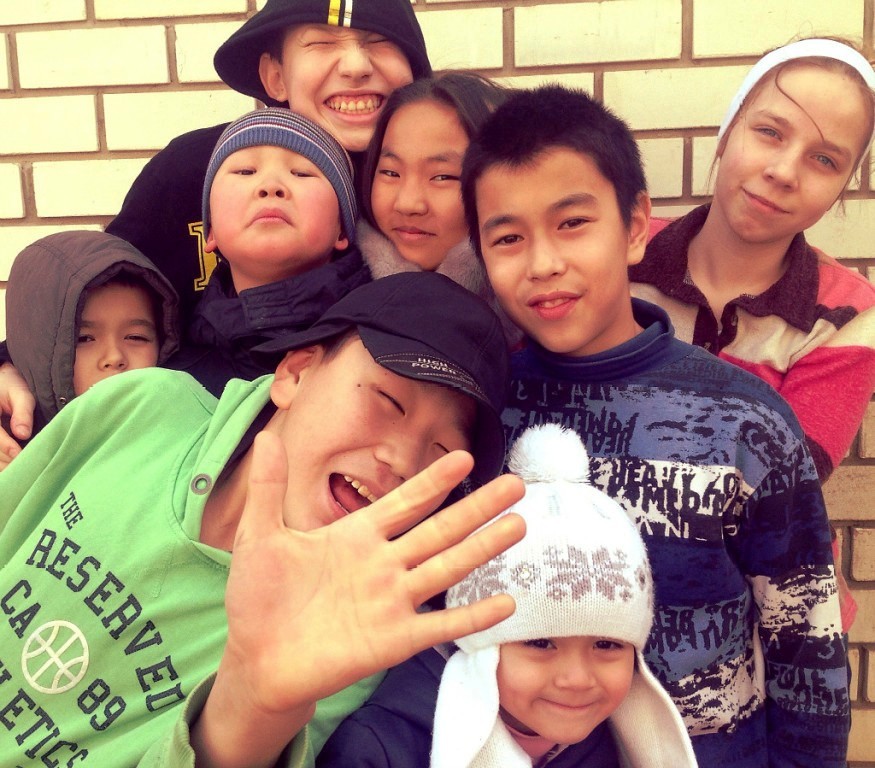FROM R.K.’s CORNER

 In the May 2010 Bridge Report, I shared the compelling story of Andrew Vincent, a courageous young American who, thirty years ago, brought the Gospel to Kalmykia, an autonomous Republic within Russia, located on the north-western shore of the Caspian Sea. The Kalmyks are an unreached people, the only Buddhist community in Europe. It is also a story of a young Kalmyk, Sarang Badeev, who responded to Andrew’s message and became a faithful follower of Jesus Christ. Andrew taught him the Word of God and trained him for leadership. In 1996, Andrew was blacklisted by the Russian government for his missionary activities and forced to permanently leave Russia. Sarang was ordained and given charge of the first church in the capital of Elista. Since then, he has continued to pastor, evangelize and plant church fellowships within the Kalmyk communities in Russia, Mongolia, China—and the United States!
In the May 2010 Bridge Report, I shared the compelling story of Andrew Vincent, a courageous young American who, thirty years ago, brought the Gospel to Kalmykia, an autonomous Republic within Russia, located on the north-western shore of the Caspian Sea. The Kalmyks are an unreached people, the only Buddhist community in Europe. It is also a story of a young Kalmyk, Sarang Badeev, who responded to Andrew’s message and became a faithful follower of Jesus Christ. Andrew taught him the Word of God and trained him for leadership. In 1996, Andrew was blacklisted by the Russian government for his missionary activities and forced to permanently leave Russia. Sarang was ordained and given charge of the first church in the capital of Elista. Since then, he has continued to pastor, evangelize and plant church fellowships within the Kalmyk communities in Russia, Mongolia, China—and the United States!
Last May, Sarang visited Steve and my home in Florida. We came to know him better, and learned more about his people, their background history and current life. It is a sad tale of war, suffering, oppression, and persecution, but also of endurance and the will to survive in a harsh environment.
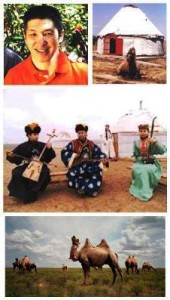 In this issue, we are giving you an overview of the history of the Kalmyk people, and an update on Sarang’s apostolic work among them. Sarang is worthy of our support! Please allocate donations to him and his ministry: KALMYK WORKERS.
In this issue, we are giving you an overview of the history of the Kalmyk people, and an update on Sarang’s apostolic work among them. Sarang is worthy of our support! Please allocate donations to him and his ministry: KALMYK WORKERS.
KALMYKIA – A BRIEF BACKGROUND
2. Peter 3:9, “The Lord is not slow to fulfill his promise as some count slowness, but is patienttoward you, not wishing that any should perish, but that all should come to repentance.”
Matthew 24:14, “And this Gospel of the Kingdom shall be preached to all the world as a testimony to all nations (ethnos), and then the end will come!”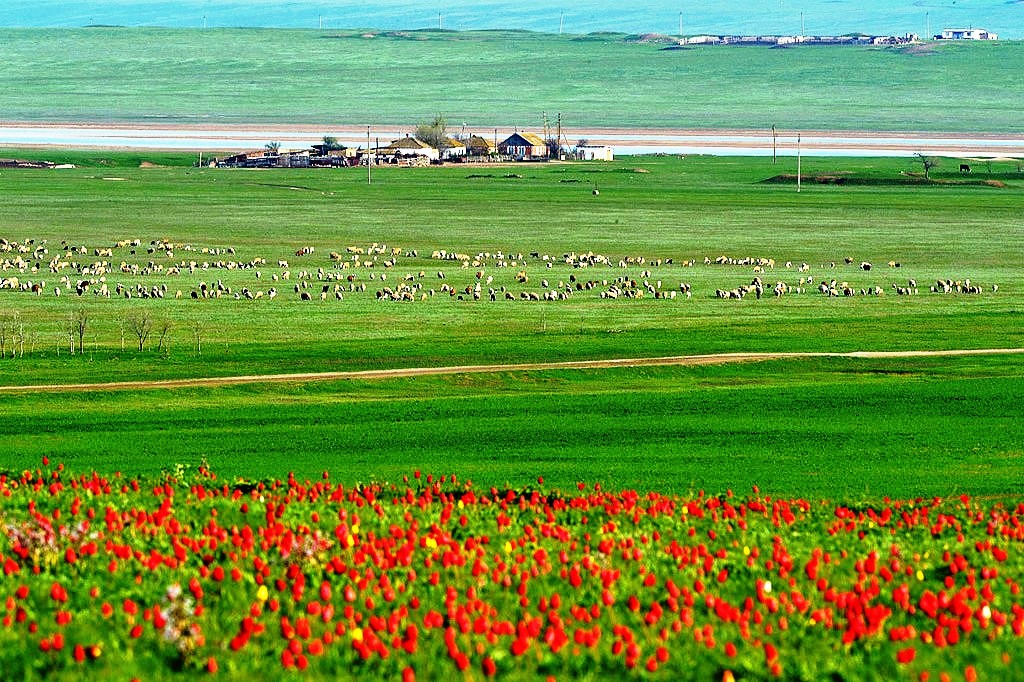 NOTE: This is an update on the May 2010 Bridge Report in which we featured the Kalmyk people, their eventful, tragic history, their compelling spiritual journey from ancient times Shamanism, to the Christian faith (12th Century), to Tibetan Buddhism (17th Century), then being reintroduced to the Gospel (mid–1980s) while under Soviet rule by a bold American, the only foreign visitor to Kalmykia since the 1917 Bolshevik revolution. It also featured the testimony of Sarang Badeev, one of the young Kalmyks who, twenty years ago, embraced the Christian faith and has, since then, labored in an apostolic capacity among his Kalmyk people who are located in China, Mongolia, Russia, and the United States.
NOTE: This is an update on the May 2010 Bridge Report in which we featured the Kalmyk people, their eventful, tragic history, their compelling spiritual journey from ancient times Shamanism, to the Christian faith (12th Century), to Tibetan Buddhism (17th Century), then being reintroduced to the Gospel (mid–1980s) while under Soviet rule by a bold American, the only foreign visitor to Kalmykia since the 1917 Bolshevik revolution. It also featured the testimony of Sarang Badeev, one of the young Kalmyks who, twenty years ago, embraced the Christian faith and has, since then, labored in an apostolic capacity among his Kalmyk people who are located in China, Mongolia, Russia, and the United States.
Please visit our website: https://www.bridgeinternational.org/pdf/may2010.pdf
UPDATE ON KALMYKS IN RUSSIA
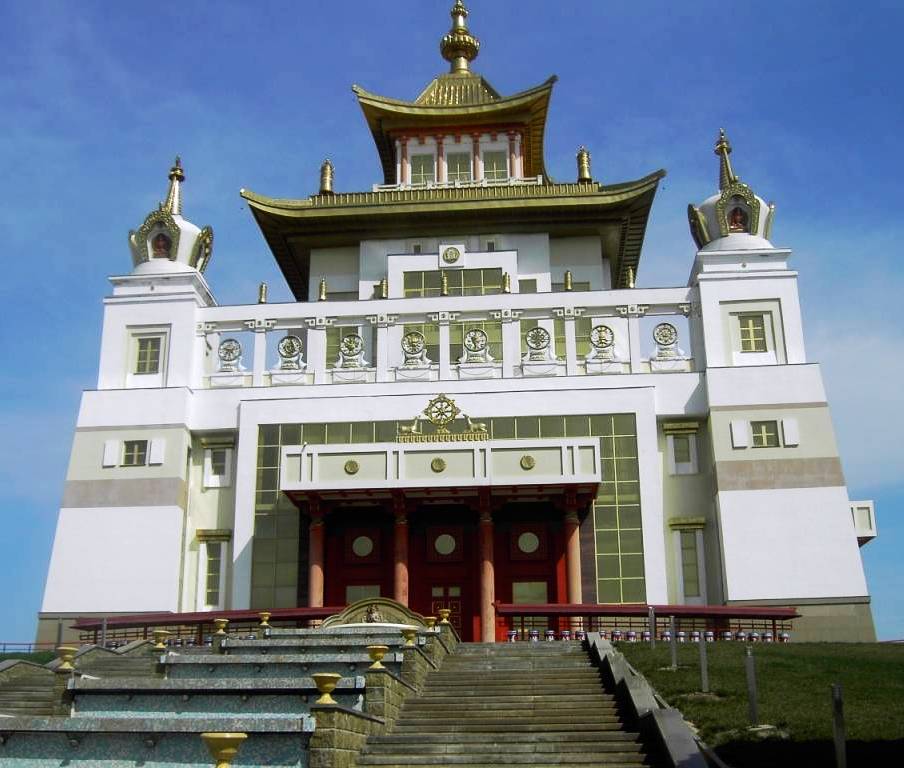 Immediately after the sanctions were imposed upon Russia by the European Union and the United States, the economic situation deteriorated dramatically with sharp rise in the cost of staples, food, grain, meat, and milk. The people were told it was due to Russia’s militarily enforced annexation of the Crimean Peninsula from the Ukraine into the Russian Federation. Kalmykia’s state financial resources were drained and sent to the Federal government in Moscow. When later the oil prices dropped, the situation deteriorated even further.
Immediately after the sanctions were imposed upon Russia by the European Union and the United States, the economic situation deteriorated dramatically with sharp rise in the cost of staples, food, grain, meat, and milk. The people were told it was due to Russia’s militarily enforced annexation of the Crimean Peninsula from the Ukraine into the Russian Federation. Kalmykia’s state financial resources were drained and sent to the Federal government in Moscow. When later the oil prices dropped, the situation deteriorated even further.
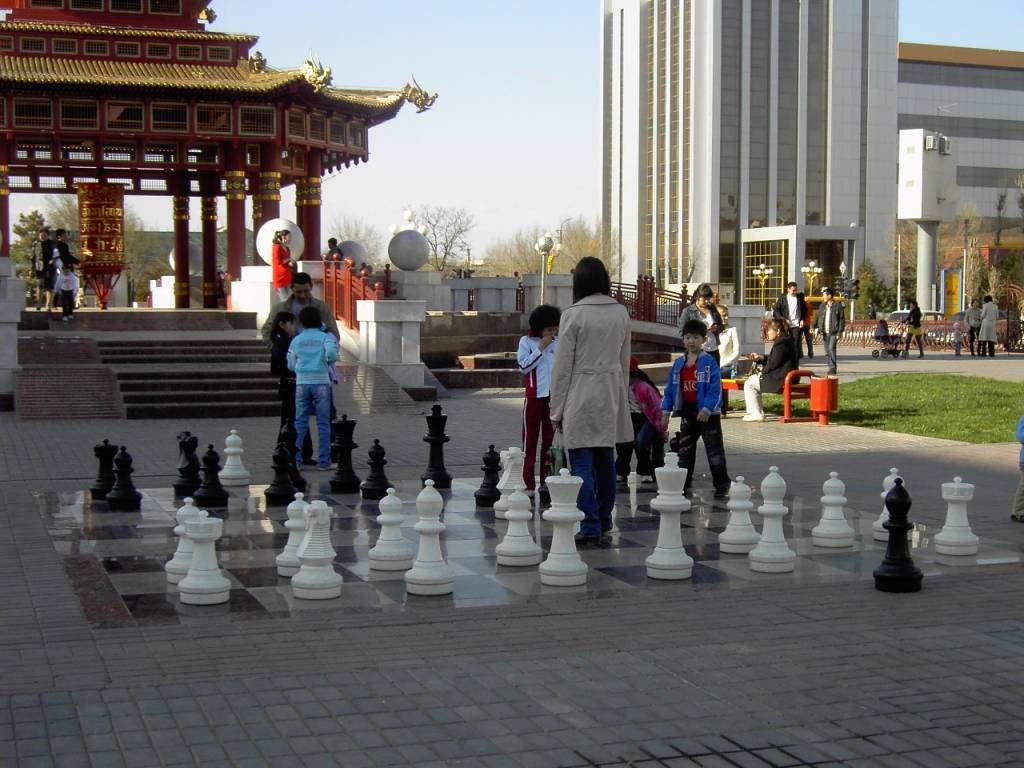 This is reflected in the fact that the Kalmyk government revenue has decreased, and the number of jobs in the public and private sectors are reduced. Banks have stopped giving business loans, with the result that some of the businesses are closing, causing a lot of people to lose their jobs. Even before these events took place, it was difficult to find jobs in Kalmykia, which is one of the poorest regions in Russia. The long-term negative impact of a large outflow of young people who have left for Moscow and other Russian cities in search of work speaks for itself. In addition, it is now harder to buy a home because the interest on mortgages has sharply risen. Prior to this, many who had moved to Moscow and had well-paid jobs, helped support their family members in Kalmykia. With so many having now lost those jobs, there is extra hardship on the families back home.
This is reflected in the fact that the Kalmyk government revenue has decreased, and the number of jobs in the public and private sectors are reduced. Banks have stopped giving business loans, with the result that some of the businesses are closing, causing a lot of people to lose their jobs. Even before these events took place, it was difficult to find jobs in Kalmykia, which is one of the poorest regions in Russia. The long-term negative impact of a large outflow of young people who have left for Moscow and other Russian cities in search of work speaks for itself. In addition, it is now harder to buy a home because the interest on mortgages has sharply risen. Prior to this, many who had moved to Moscow and had well-paid jobs, helped support their family members in Kalmykia. With so many having now lost those jobs, there is extra hardship on the families back home.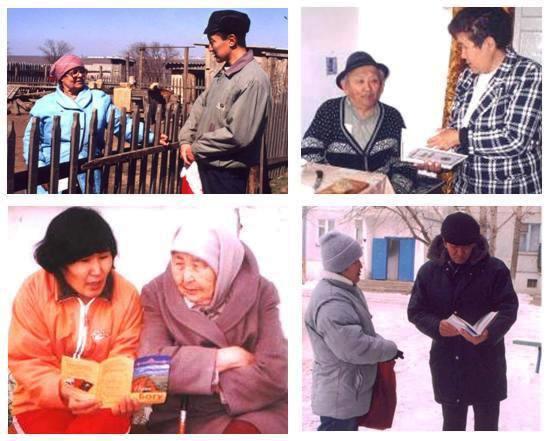 This depressing, negative situation and bleak future outlook, however, is not all bad! As the dark is getting darker, the light shines brighter! The hardship is causing people to become more open to the Gospel and the Word of God.
This depressing, negative situation and bleak future outlook, however, is not all bad! As the dark is getting darker, the light shines brighter! The hardship is causing people to become more open to the Gospel and the Word of God.
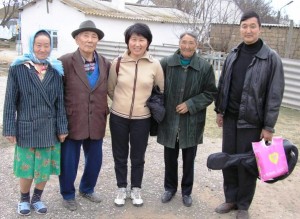 The Kalmyks have had, since the introduction of the Christian faith by the Nestorians in the 12th Century, an awareness of a monotheistic Creator God. Many more are asking spiritual questions and showing interest in reading and understanding the Bible — they are seeking for truth, and they are more open to receiving the message about a loving, personal God and responding to Him! Here are some pictures of the Kalmyk believers.
The Kalmyks have had, since the introduction of the Christian faith by the Nestorians in the 12th Century, an awareness of a monotheistic Creator God. Many more are asking spiritual questions and showing interest in reading and understanding the Bible — they are seeking for truth, and they are more open to receiving the message about a loving, personal God and responding to Him! Here are some pictures of the Kalmyk believers.
THE KALMYKS IN MONGOLIA
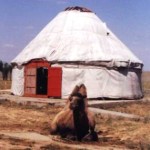 Unofficially, the population is estimated at 400,000, most of whom live in small communities in the western territory in the foothills of the Mongolian Altai. There are three main towns which have a few industrial enterprises; the city of Kobdo being officially recognized as their capital. Many still live the traditional nomadic lifestyle as cattle breeders, and some live remotely high up in the mountains which are difficult to access. The Kalmyks in Western Mongolia are rich in folklore, and preserve their traditions through creative expressions of dance, song, poems, and story-telling. They also excel at national sports. Many of those who live in the capital of Ulaanbaatar are very active in the political life of Mongolia Business Sport. The current President of Mongolia, Elbek Dorj is Western Mongolia Kalmyk, so is prior Prime Minister Altanhuyag. The pristine Mongolian Altai is a massive, untouched wilderness, abounding in minerals and vegetation with a variety of physical healing agents.
Unofficially, the population is estimated at 400,000, most of whom live in small communities in the western territory in the foothills of the Mongolian Altai. There are three main towns which have a few industrial enterprises; the city of Kobdo being officially recognized as their capital. Many still live the traditional nomadic lifestyle as cattle breeders, and some live remotely high up in the mountains which are difficult to access. The Kalmyks in Western Mongolia are rich in folklore, and preserve their traditions through creative expressions of dance, song, poems, and story-telling. They also excel at national sports. Many of those who live in the capital of Ulaanbaatar are very active in the political life of Mongolia Business Sport. The current President of Mongolia, Elbek Dorj is Western Mongolia Kalmyk, so is prior Prime Minister Altanhuyag. The pristine Mongolian Altai is a massive, untouched wilderness, abounding in minerals and vegetation with a variety of physical healing agents.
THE KALMYKS IN CHINA
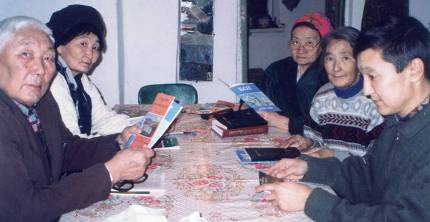 Most of the Kalmyk ancestors—the Oirats came from Dzhungaria, which today is located in the Xinjiang region of China. In the 1600, most of the Oirats left their homeland and settled in present Kalmykia in Russia, but 150 years later, many of them returned to Dzhungaria to escape the control and persecution of the Czar Dynasty. Today, the majority live the traditional lifestyle as nomadic horse and cattle breeders. Their race horses are considered the best in China and the Kalmyks are by far the best equestrians. One breed is called the Karasharskaya, named after the nearby city of Karashar. It is a mixture of Mongolian and Caucasian horses, a tall, slender and beautiful horse.
Most of the Kalmyk ancestors—the Oirats came from Dzhungaria, which today is located in the Xinjiang region of China. In the 1600, most of the Oirats left their homeland and settled in present Kalmykia in Russia, but 150 years later, many of them returned to Dzhungaria to escape the control and persecution of the Czar Dynasty. Today, the majority live the traditional lifestyle as nomadic horse and cattle breeders. Their race horses are considered the best in China and the Kalmyks are by far the best equestrians. One breed is called the Karasharskaya, named after the nearby city of Karashar. It is a mixture of Mongolian and Caucasian horses, a tall, slender and beautiful horse.
THE PROSPERING OF THE GOSPEL AMONG THE KALMYKS
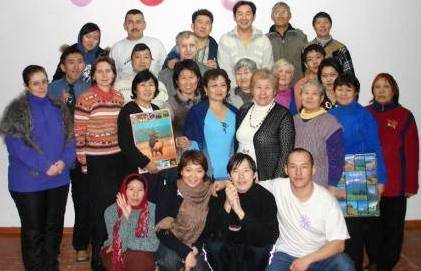 KALMYKIA, RUSSIA—In the capital of Elista there is a fellowship of app. 65-70 committed believers. In the surrounding villages there are several home fellowships, counting app. 140 adults. The evangelical church is regarded as a cult by the authorities. The believers are not actively persecuted, although the KGB keeps a keen eye on them.
KALMYKIA, RUSSIA—In the capital of Elista there is a fellowship of app. 65-70 committed believers. In the surrounding villages there are several home fellowships, counting app. 140 adults. The evangelical church is regarded as a cult by the authorities. The believers are not actively persecuted, although the KGB keeps a keen eye on them.
MONGOLIA—The first believer came to faith through Sarang through a visit to his aunt, who lives there. Now there are app. 170 believers who are scattered in small home groups throughout the region. During Sarang’s visits, he teaches and pastors them.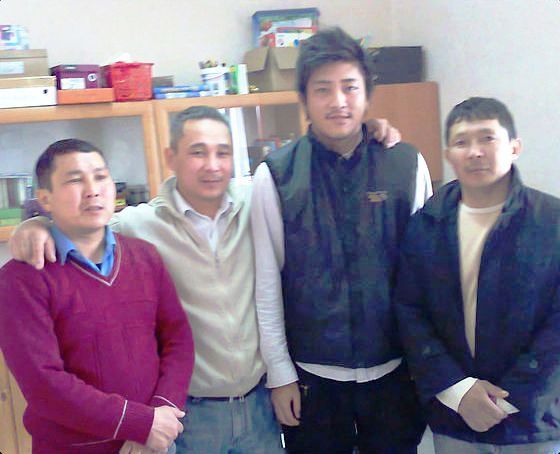
CHINA—In the Xinjiang Province, the believers live underground, but Sarang has preached the Gospel and seen 47 people come to faith, some of them young and well educated.
The doors are wide open to the Kalmyk people– will you partner with Sarang in reaching them with the Gospel?

